Transmission of FRIDAY, 30 May 21H30 CET Europe by SatelliteReconciling for the Future | The primary school of Binca, in Kosovo. In Albanian, it’s called Endre Mjeda. In Serbian: Miladin Markovic. This school is attended by both Serb and Albanian children.
In the playground, the children speak to each other through an interpreter. During the classes, the two groups follow different curricula. It took some time for the parents to accept this joint school concept. | 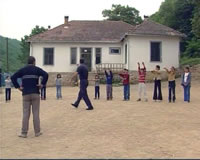 | Noe Gega, Albanian parent:
“I feel OK about that, what can you do, everybody should study together, we should forget the past and start a new life in a good way.” Vera Ilic, Serbian woman:
“We have lived well with Albanians here, but after what happened the situation has changed. Both them and us think differently. We hope it will be all right.” Liman Kanberi, School Director:
«This integration can be an example for other places where there are Albanians and a Serb minority» | 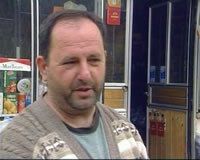 | But the school in Binca is a very isolated example – it is the only multiethnic school in Kosovo, organized by an Italian NGO. Relations between Serbs and Albanians are far from idyllic and the tension and mistrust are still very tangible.
Mitrovica is a divided town and the bridge in the center is a kind of border crossing, on which both sides have had serious clashes with international forces. The tension is not that visible anymore, but there is still no freedom of movement, neither for Serbs, neither for Albanians. Only escorted by KFOR can one cross to the other side of the bridge. Man in KFOR truck, sound bite:
“People working with us, who live nearby or come with KFOR, aren’t allowed to cross either. They can come in a truck, but the bridge is as far as they can get.” | 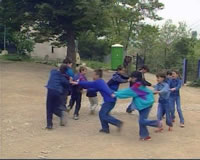 | In such an edgy environment, every attempt to contact the other side is perceived as betrayal, or just hopeless. Ivan Radic tries to organize dialogues between Serbs and Albanians within the Nansen Dialogue Center. In spite of his own refugee experience and all the difficulties, Ivan says he is optimistic: Ivan sound bite:
Regardless the political solution of the problem, regardless the final status of Kosovo, I hope that we will be able to live, if not together, then at least side by side. But even that requires dialogue. » | 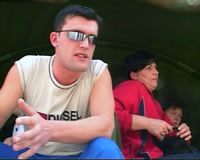 | Those who want to initiate dialogue are often unwelcome on both sides of the bridge. Ivan occasionally crosses to the other side to meet his Albanian colleagues in the so-called «Confidence Zone”. In this zone, there is a multiethnic computer workshop. It is the only gathering place for young Serbs and Albanians. | 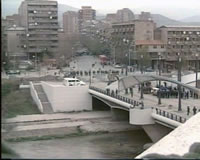 | Rina Mehmeti, sound bite
“We both miss the same things; we miss company just like them. Both sides feel deprived of something.” | 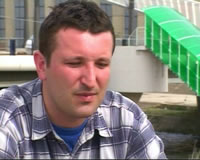 | But dialogue is limited to narrow confidence zones protected by international forces, and limited to a handful of people. The majority still stays on their side of the fence, in fear and mistrust of those on the other side. | 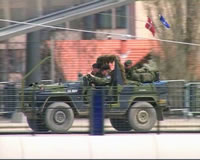 | | How to break out of the limited circle? How to cross that bridge, and speak out on the need for reconciliation? These same questions were addressed at a conference in Thessaloniki. “Reconciling for the Future”, an initiative launched by the Stability Pact and the Center for Democracy and Reconciliation, wants to start spreading good examples across the region. One of the ideas discussed, was a simultaneous joint apology to be signed by the leaders of the countries of Southeastern Europe. | 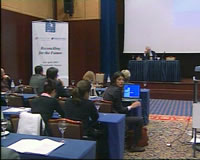 | Zarko Puhovski , Croatian Helsinki Committee
“A simultaneous apology is the only chance for this to happen. But it also needs simultaneous pressure from the international community. To be honest, without that, it will never happen.” | 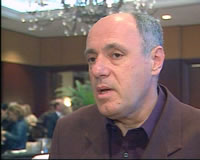 | Elisabeth Rehn, Stability Pact
“Most of the people are sick and tired of wars and problems; they really want to build up their future, a future that will allow the young people to stay in the region” | 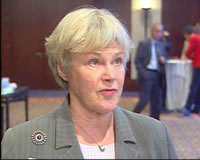 | Nenad Sebek, Center for Democracy and Reconciliation in SEE:
“We watch as our neighbours Romanians, Bulgarians, let alone Hungarians and Slovenes hurry towards Europe or are already there, while we lag behind. I think that we are all tired of misery, poverty and all the other consequences of war and I think that the feeling is now there for a new page to be opened.” | 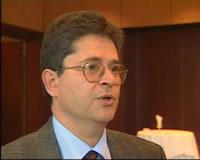 | From the roofs of Sarajevo, the view on the Mosque, the Orthodox and the Catholic Church testifies the unique beauty of this place. But this mixture of cultures brought to Sarajevo more evil than good in the last decade. The Bosnian war has divided three ethnic communities, not only in the present, but also in their perception of the past. History lessons in Bosnia are taught according to three different curricula. | 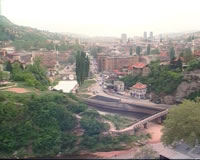 | | In the parts dominated by Serbs, teachers rely on books from Serbia. Same situation in the Croat parts of Bosnia where curricula from Croatia are in use. Different and often opposite interpretation of history in such a small place put teachers in a delicate position. | 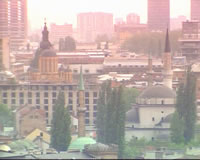 | Ekrem Barakovic, History Teacher, Sarajevo:
“I don’t like to talk about practical history, because it ultimately becomes political. In these times, we as a society seem to be infected with politics and everything tends to become political.” | 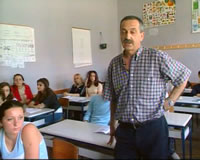 | The Gavrilo Princip Bridge in Sarajevo is being reconstructed, but the interpretation of Princip’s deed varies from heroism to terrorism, depending on the schoolbook. Student, Sarajevo:
`Although he was referred to as a hero in the pre-war books as well as by my parents, today everyone has rejected him, suddenly he’s no good.` | 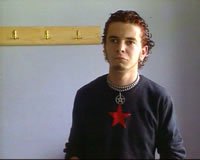 | Second Student, Sarajevo:
“I thought that he was a terrorist, and now my opinion on him is somewhat split. I don’t like at all that complacency around the Mlada Bosna organization and its goals. In any case, I don’t know if there are any good or bad sides to it.” | 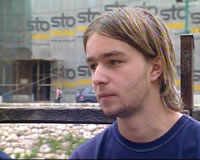 | A couple of kilometers from the center of Sarajevo, in Lukavica, where Serbs live, secondary school students do not have any dilemmas about whether Gavrilo Princip was a positive historical character. Student, Lukavica:
“The people accepted Gavrilo Princip as a hero, because he literally sacrificed his freedom and his life for something that would eventually, after all the hardships, bring salvation to the people.” | 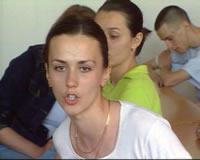 | Mutually opposed histories are common in the Balkans – what is called occupation in one book, is liberation in the other. With a group of history teachers from all over the region, the Center for Democracy and Reconciliation made an in-depth analysis of history teaching in the Balkans. Dubravka Stojanovic is one of these professors now developing teaching packs to offer different perspectives, to open windows on other interpretations. Dubravka Stojanovic, History teacher, Belgrade
`It is always the other who is responsible. With that responsibility, which is always “theirs” and the fabrication of a picture of other nations, a source of intolerance is created and that source is very easily used when, for political reasons, it fits well.` | 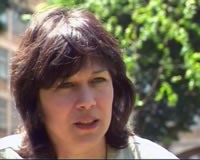 | Student, Lukavica:
“I think that Tito is indirectly responsible for the recent civil war in Bosnia because Tito didn’t solve many ethnic issues in the former Yugoslavia.” | 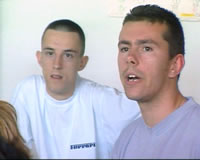 | Student, Sarajevo:
“We believe, or rather we know, that we have been victims of an aggression. Until in Banja Luka they thought that there was no aggression whatsoever in Bosnia-Herzegovina... They simply maintain that it was a civil war in which they rebelled against the secession from Yugoslavia.” | 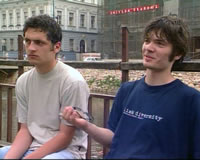 | The last day of the school year was celebrated by high school graduates…. both in Sarajevo and Lukavica. They maybe believe in different truths, but they still sing the same songs… | 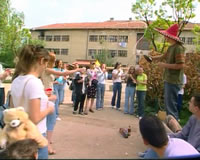 |
|
|
 Facebook
Facebook Twitter
Twitter
























